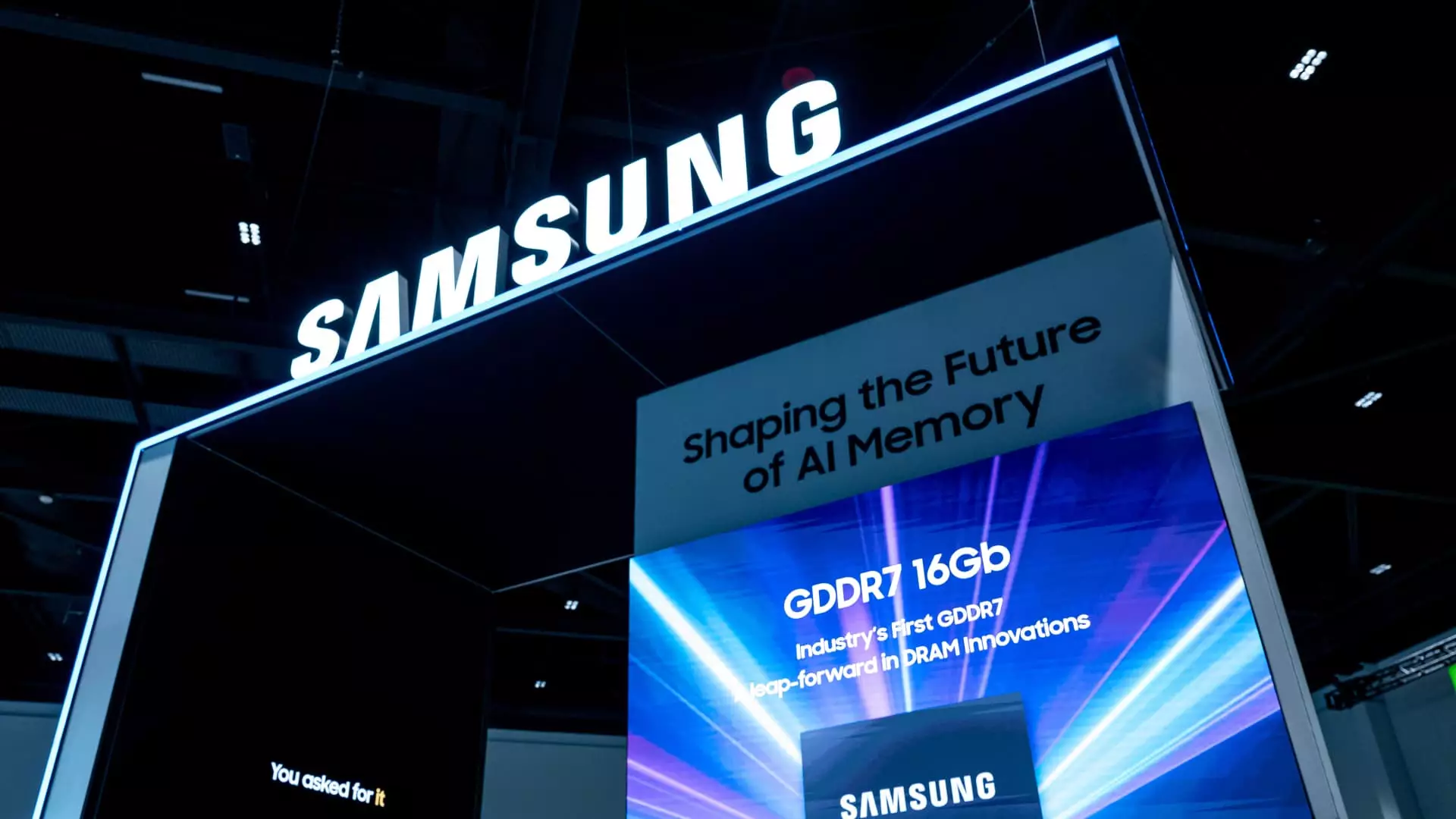In a startling turn of events, Samsung Electronics has forecasted a dramatic 56% drop in its second-quarter profits, highlighting the growing challenges faced by one of the world’s most iconic tech giants. With an expected operating profit of approximately 4.6 trillion won—significantly below last year’s 10.44 trillion won—the company’s outlook paints a picture of stagnation amid fierce global competition. This dismal projection signals more than just a short-term slump; it underscores systemic issues within the company’s core divisions, especially its memory chip and smartphone segments, which have long been pillars of Samsung’s revenue.
Critically, these figures reveal a company that is struggling to adapt swiftly to emerging tech paradigms like artificial intelligence, where competitors such as Nvidia are surging ahead. While Samsung remains an influential player, the disparity between its current performance and market expectations exposes vulnerabilities that could have long-lasting repercussions if unaddressed.
Contributing Factors: Regulatory Hurdles and Market Dynamics
Samsung’s leadership has pointed to a complex mix of external and internal factors dampening profitability. US restrictions on the export of advanced AI chips to China have constricted Samsung’s ability to participate fully in booming AI markets, thus limiting revenue streams and escalating inventory issues. Regulatory hurdles have often gnawed at the company’s competitive edge, especially in high-tech domains directly impacted by geopolitics.
Inside the company, inventory management issues further compound the woes. Excess high-margin memory products sit unsold amid waning demand, illustrating miscalculations in supply chain planning and market anticipation. These inventory adjustments, combined with the declining value of existing stock, exert downward pressure on profits. The company’s statement implicitly hints at a strategic misalignment—an inability to swiftly pivot and capitalize on the rapidly evolving AI chip sector.
Failure to Keep Pace in the Memory Race
At the heart of Samsung’s struggles lies its memory chip division, which has traditionally been a revenue pillar. However, the global race for high-bandwidth memory (HBM)—vital for AI processing—has exposed stark competitive gaps. While SK Hynix has secured key positions as Nvidia’s favored HBM supplier, Samsung’s delayed certification of its latest HBM chips has limited its influence in this lucrative sector.
Nvidia commands roughly 70% of the global HBM demand, making its qualification a critical marker for Samsung’s future success. The reported postponement of Samsung’s HBM product approvals until at least September signifies a missed opportunity to gain ground before the industry shifts further in Nvidia’s favor. Such delays aren’t mere technical setbacks; they threaten Samsung’s strategic ambitions to hold a dominant position in the high-performance memory market.
Foundry Business and Competitive Pressures
Samsung’s semiconductor foundry segment illustrates the broader structural issues plaguing the company. Facing stiff competition from Taiwanese rivals like TSMC, Samsung’s order intake remains sluggish, casting doubt on its ability to regain lost market share. The company’s efforts to procure advanced technology and secure new contracts have often been hampered by delays and strategic missteps.
Internal reports of staff cuts—reportedly around 30% in some divisions—further highlight the internal pressure to cut costs and streamline operations. While these measures might provide short-term relief, they risk impairing the company’s capacity for innovation and growth in the long term. Critics argue that without substantial reinvestment and a clear strategic shift toward emerging tech sectors, Samsung risks losing its competitive edge.
Strategic Outlook: Challenges as Opportunities
Despite these setbacks, Samsung’s resilient stock performance, up over 16% year-to-date, indicates investor confidence in the company’s long-term potential. The company’s leadership is likely aware that the current turbulence is a test of strategic agility. Prioritizing the acceleration of advanced chip development, enhancing supply chain robustness, and streamlining R&D efforts will be crucial.
The company’s move to evaluate and ship improved HBM products signifies an acknowledgment of these challenges and a willingness to adapt. Success in these endeavors hinges on overcoming technical delays and establishing stronger partnerships with tech giants like Nvidia. With the global chip industry in a state of flux, Samsung’s ability to innovate swiftly and reposition itself could turn the tide in its favor.
Unquestionably, the road ahead demands bold strategic shifts. Samsung must shift from a reactive posture to a proactive innovation leader in high-tech memory and AI chips. If it can leverage its vast manufacturing capacity and rekindle its R&D prowess, the company still possesses the potential to not only rebound but redefine industry standards amidst the chaos.


Leave a Reply